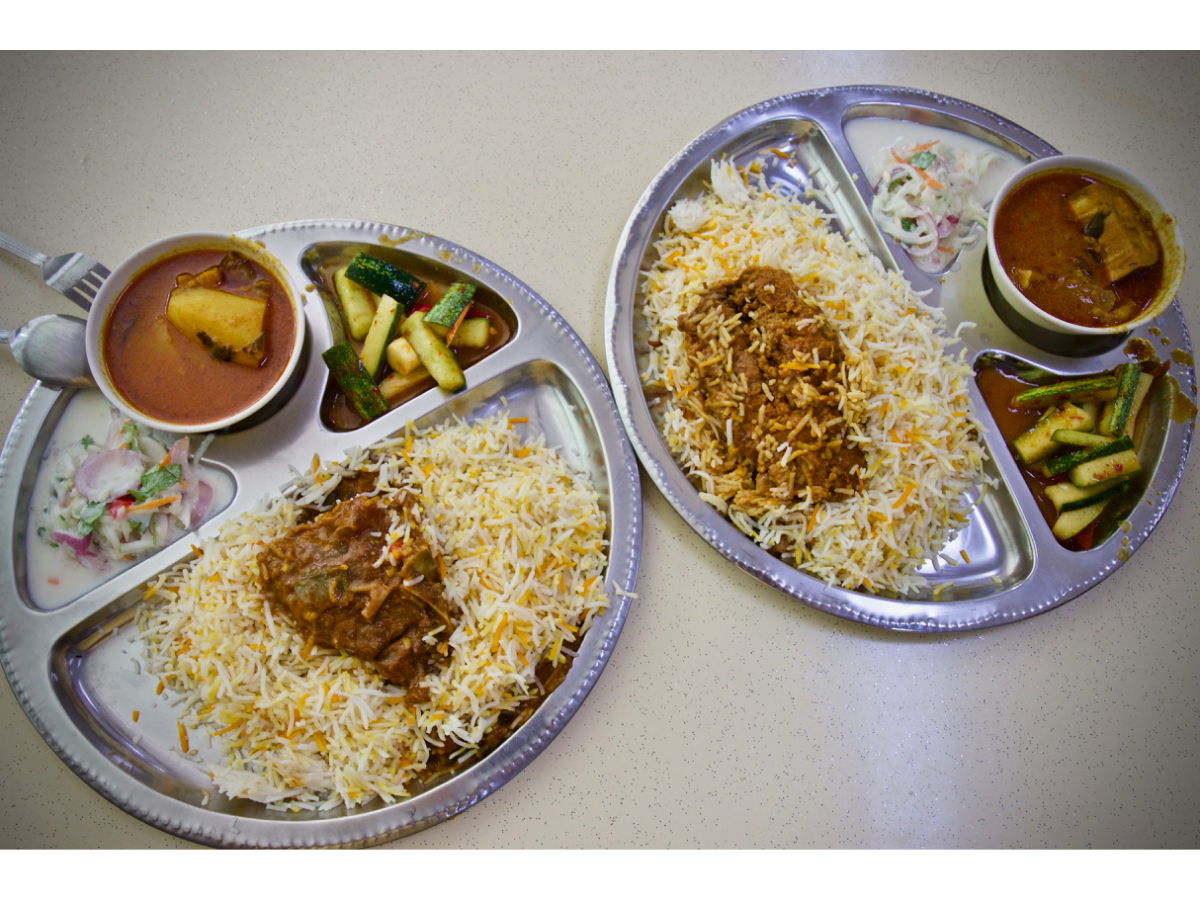Ali Nachia Briyani Dam: The old Railway Station biryani is still impressive!

When this biryani stall first opened at the old Tanjong Pagar railway station in 2002, it quickly gained a loyal following for its excellent and value-for-money biryanis, but all that was put to a stop when the railway station had to shut down in 2011.
Ownership of the 26km track from Woodlands to Tanjong Pagar reverted from Malaysia to Singapore, so the stall relocated to Dingxin Mei Shi coffeeshop on the second floor of Tanjong Pagar Plaza bringing along their loyal fanbase.
Helmed by Mohammed Ali Latif, 69, the father of three —who previously worked as a butcher and a football coach — learnt how to cook dum biryani when he worked as a wedding caterer in the 1970s. He is the father of ex-national football player Rafi Ali.
The stall offers three kinds of biryani — chicken ($7), mutton ($8) and fish ($7, only available on Fridays). The biryanis are dum-style — where the cooked rice and meat combine in one pot for the final steaming process.
Ali Nachia is one of the very few hawker-level stalls which practises the dum method as most stalls cook the meat and rice separately. That said, we’re unsure as to how the dum method contributes to the overall flavour as the quality of the meat and rice is as good as any of the top hawker biryani offerings in Singapore and those are done non-dum style.
The meats, especially the mutton, have soft and tender textures, also helped by the fact that the mutton parts they select are close to the bone. Meat close to the bone tends to be more tender.
The masalas (the thick resultant paste you get from cooking the meats) are thick and nicely intense and goes well with the generous amounts of long-grain basmati rice that is served. While pleasingly buttery, more aromatic spices would have sealed the deal for us.
The fish biryani which they only offer on Fridays deserves a big shoutout. Thick cutlets of ang go li (sea bream) are fried then cooked with masala spices. The savoury fish flavour is very distinct, and it has a great richness in its taste, even more than the mutton or chicken offerings.
The meat portions are similar to what you get at other biryani stalls — the chicken is a standard thigh portion, which means that the amounts of meat can sometimes be a bit lacking, especially if you’re a big eater.
Thankfully, they are very generous when it comes to the dalcha (Hyderabadi Indian curry) ingredients. You always get huge chunks of brinjal, potatoes and carrots, with the occasional mutton fat thrown in for good measure.
It has a big savoury flavour with spice flavours and a nice sheen of tanginess and spiciness.
In addition to the dalcha, they also give out a savoury sour onion and cucumber raita (yoghurt dip) and nicely crunchy lightly savoury and sweet cucumber acar (pickled vegetables).
This, plus the more generous ingredients in their dalcha, partially justifies the higher prices at this biryani stall. Most biryanis at the hawker level costs cheaper at $5.50 to $6.50.
The raita (yoghurt dip) is a nod towards the dum biryani style where thick raita is customarily served, while the achar (and dalcha) are commonly served in local biryani offerings.
While the gesture of offering both sides is appreciated, it does mean that there are too many tangy, fresh vegetable side offerings for the amount of rice and meat that you are given.
If you’re at the coffeeshop, observe the tables where they are eating biryanis from Ali Nachia, you’ll very often see the achar or raita being left aside.
The other downside is that the raita is on the watery side, though still reasonably flavourful.
That said, the negatives at this stall are relatively minor as the biryanis at Ali Nachia are easily one of the best in Singapore.




